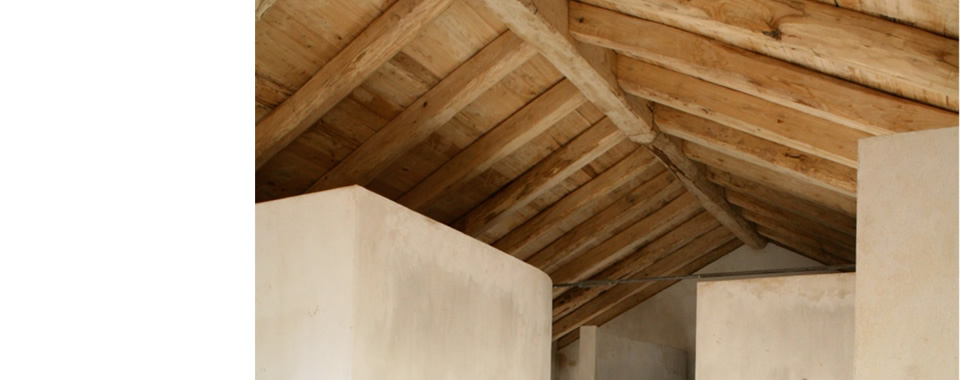

Score - Sustainable Construction in Rural and Fragile Areas for Energy efficiency
Guidelines for Integrated territorial Planning:
Solar thermal collector
The following guidelines come from a deep analysis of case studies, norms and regulations, in relation to the both national and regional level. This analysis is summarized in a card that can be downloaded in Spanish language.
The energy that sunlight pours daily on Earth is ten thousand times greater than the amount consumed daily worldwide. Solar Thermal Energy (STE) is a simple and effective technology to harness this energy. The basic idea involved in the way they work is to concentrate the sun's energy and transforming it into heat, usable for many applications, both residential and industrial.
Spain is particularly favored by its location and its climate to harness this energy, in relation to most northern European countries with less sunshine. The average annual solar radiation in the central area of the peninsula is equivalent to 1,600 kWh per square meter per year.
A solar collector uses solar radiation to heat a given fluid (usually water) at a certain temperature. The highest temperature reached depends on the design of the collector, and can range between 20 degrees and several thousands. Depending on the temperature that the installation can reach, we can talk about STE systems low, medium or high temperature.
A higher temperature system means a more complex design of the collector and the setting of the whole equipment. But low temperature systems (under 100 degrees) are interesting because they are sufficient to supply about two-thirds of energy consumption for hot water, both sanitary and industrial. And these systems are technologically very simple, easy to install and can be amortized in a few years.
Solar thermal low temperature systems are quiet, clean, with no moving parts and durable. They generate decentralized power near where it is needed without requiring infrastructure for transportation.
Against these advantages, there are a number of disadvantages such as:
- A high initial financial investment.
- Difficulty of architectural integration of the equipments, especially in cases of rehabilitation of buildings.
- Poor development of these systems for domestic refrigeration applications.
- Requirement to use auxiliary conventional systems.
Indication for the Bio-construction Action Plan
Pursuant to the guidelines written above, are here synthetically reported the criteria/examples for pilot projects to be financed in MED territory, in relation with the specific treated theme.
These criteria/examples, together with the ones resulting from all the themes of eco-construction tool matrix, will make up a Bio-construction Action Plan for each partner countries.
- Establish a fast and stable subventions program to avoid uncertainty in the market for lack of clarity in the investment terms.
- Promote research programs for the optimization of solar thermal systems, applied to the generation of hot water and heating, but especially, to the development of new applications such as cooling.
- Development of a catalog of solutions and systems that facilitates the architectural integration of the equipments.
Possible criteria for MED bio–housing quality certificate
The application of solar thermal systems in Spain is regulated by the Technical Building Code, in its core document HE 4 (Energy Saving). These systems are regulated only for the generation of hot water in new buildings, rehabilitation, and indoor pools conditioning. In those rules are not considered any architectural integration criteria.
It should be considered as possible criteria for a certificate of quality bio-MED housing conditions, the architectural integration, and possible alternative uses for solar power.
Case studies
- Abengoa Headquarters, Sevilla
- Heineken Brewery, Sevilla
